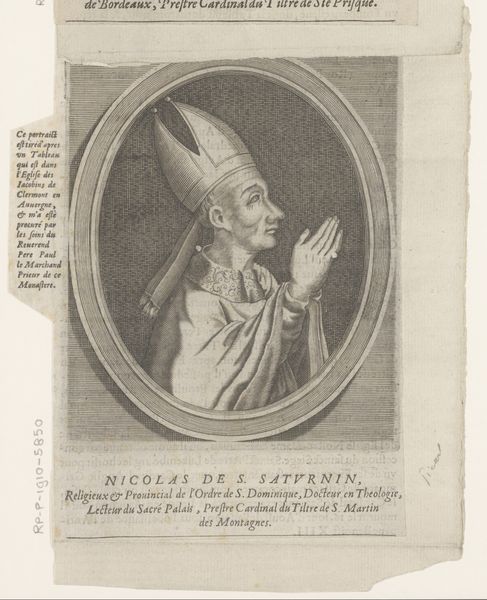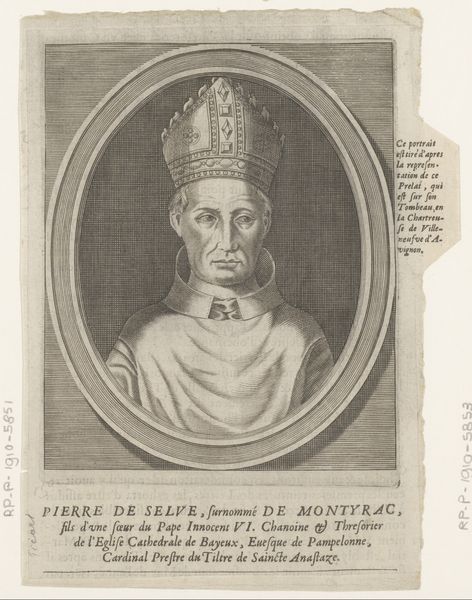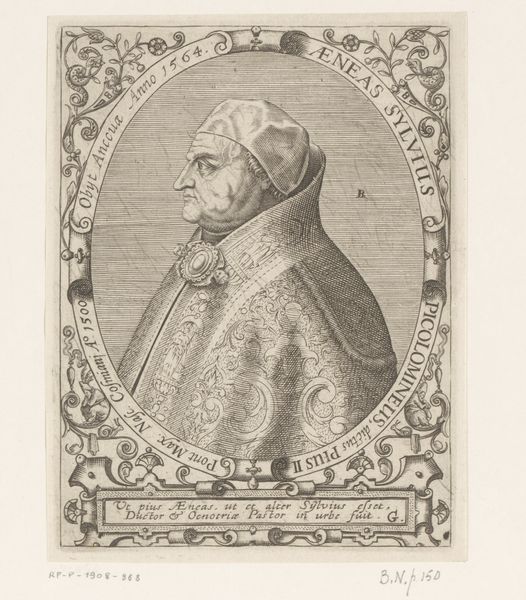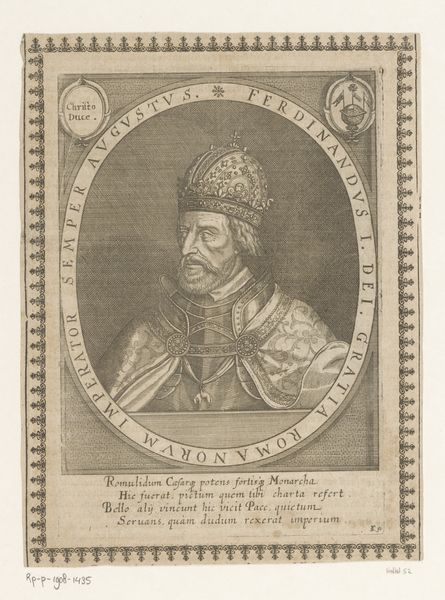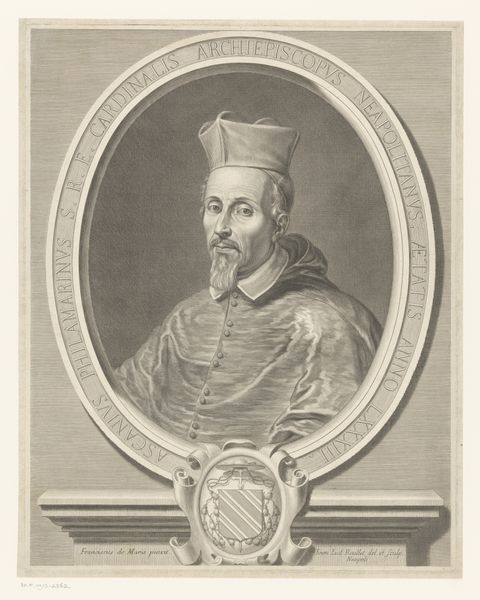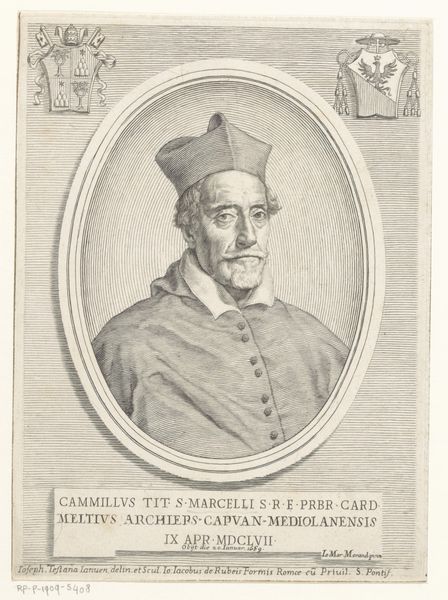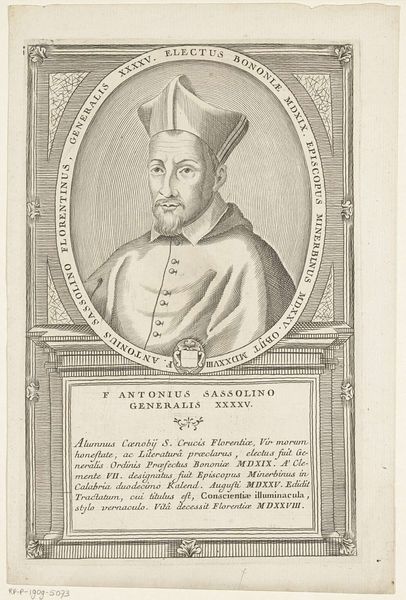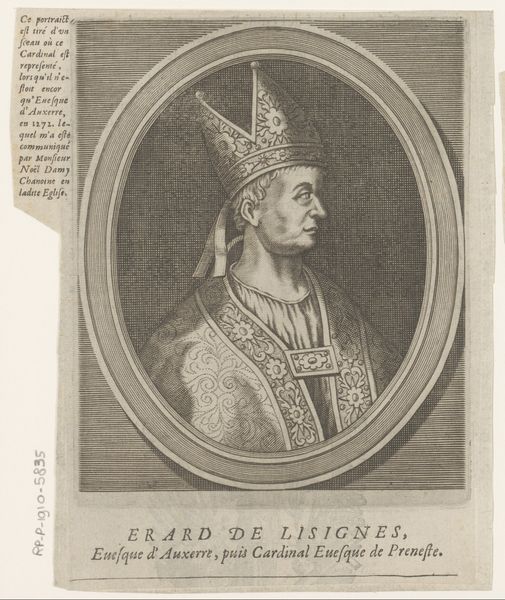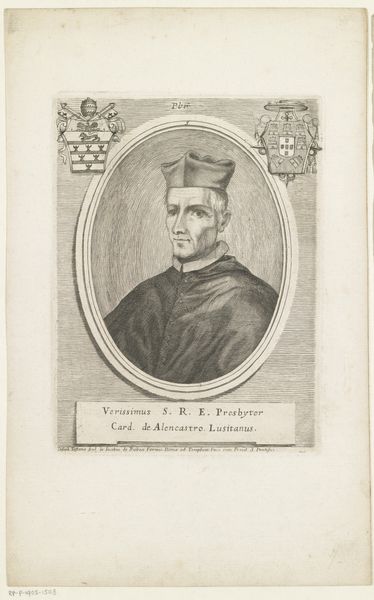
print, engraving
#
portrait
#
baroque
# print
#
history-painting
#
engraving
Dimensions: height 175 mm, width 140 mm
Copyright: Rijks Museum: Open Domain
Curator: There's a compelling directness to this portrait. The subject is encased in an oval, surrounded by the details of the sitter’s history, or in this case, Philippes de Cabassole's accomplishments and titles. The artist, Etienne Picart, presents Cabassole as someone you would surely be in awe of. Editor: Indeed, there is an undeniable weight, even intimidation, in his gaze, don't you think? It makes one ponder the power held within those ornate robes and elaborate mitre, it is Baroque-level excessiveness and flourish if you ask me! Curator: The context is essential here. It's an engraving from around 1660, placing it firmly within the Baroque period, which makes the visual statement appropriate. And given that Picart apparently based his portrait on Cabassole's tomb, there’s this really interesting sense of commemorating both life and death simultaneously. It really emphasizes the institutional role of image-making at the time. Editor: That little fact sends a bit of a shiver down my spine! To think, this image essentially lives on *because* someone passed on. It makes you consider what Picart found captivating about the Cardinal... and if those things even resonate with us centuries later. Or is it simply that the church wanted us to have it in our memory? Curator: Well, engravings were meant to disseminate imagery widely. The text makes explicit that this portrait came directly from the tomb. So this piece speaks to both religious authority and, if you consider its wider distribution, maybe an attempt at creating something like celebrity for these historical figures. Editor: Do you find the image itself inspiring or do you see it merely as a historical record? Curator: You know, I see it as somewhere in between, really! On one hand, the starkness is a reminder of mortality. On the other, the elaborate detail and the confidence of the engraving showcase artistic skill, making this a complex combination that transcends just the documentary. How do you read that, considering your field, if I may ask? Editor: I see it as the church's deliberate shaping of memory... it is both effective and chilling. The portrait, as propaganda and memento-mori is a powerful concoction in the right context. I guess both perspectives are accurate simultaneously. Thank you for your thoughtful perspectives! Curator: The pleasure was all mine, as usual!
Comments
No comments
Be the first to comment and join the conversation on the ultimate creative platform.

